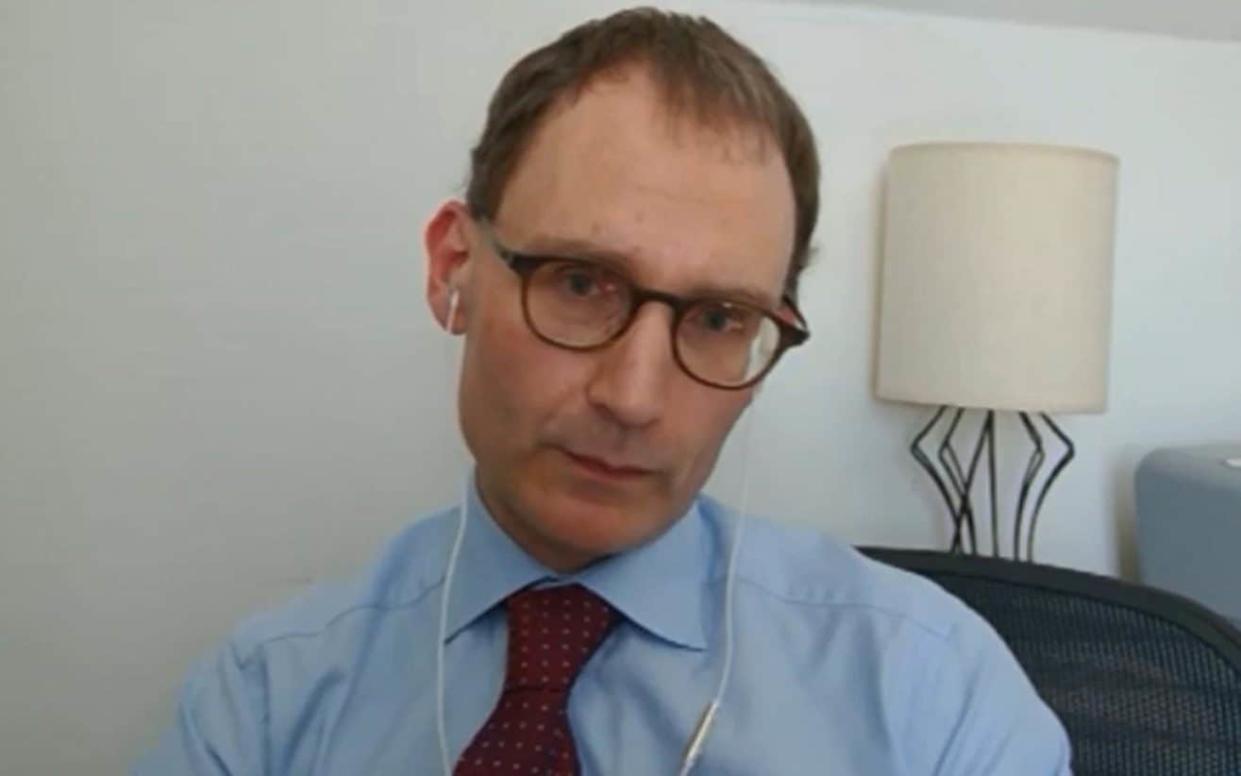'Prof Lockdown' Neil Ferguson admits Sweden used same science as UK


The scientist behind lockdown in the UK has admitted that Sweden has achieved roughly the same suppression of coronavirus without draconian restrictions.
Neil Ferguson, who became known as “professor lockdown” after convincing Boris Johnson to radically curtail everyday freedoms, acknowledged that, despite relying on “quite similar science”, the Swedish authorities had “got a long way to the same effect” without a full lockdown.
Sweden has adopted a far softer approach to Covid-19 than elsewhere in Europe, introducing voluntary social-distancing measures and keeping restaurants and bars and many schools open.
As of the end of May it had recorded 4,350 deaths from Covid-19. By contrast, as of Monday there had been at least 39,045 in England.
Financial data released in May also suggested Sweden had so far avoided a heavy blow to its economy by shunning a lockdown, its GDP contracting just 0.3 per cent in the first three months of the year, compared to 3.8 per cent across the eurozone.
The UK economy contracted two per cent, the sharpest drop since the height of the financial crisis.
Prof Ferguson resigned from the main Scientific Advisory Group for Emergencies (Sage) committee last month after The Telegraph revealed that he broke social distancing rules to meet his married lover. On Tuesday, however, a witness at the House of Lords Science and Technology Committee revealed that he is still helping shape policy, leading a team contributing to one of the most influential Sage sub-committees.

Giving evidence to the same Lords committee on Tuesday, Professor Ferguson said he had the “greatest respect” for Swedish scientists.
“They came to a different policy conclusion but based really on quite similar science.”
He added: “I don’t agree with it. But scientifically, they’re not that far from scientists in any part of the world.”
Sweden’s rate of virus reproduction - the so-called R value - is thought to be at 1, meaning that, on average, every case will cause one other infection.
In the UK, it is thought to be between 0.75 and 1, meaning the virus outbreak should be retreating.
While pointing out that Sweden’s mortality rate is not declining in a similar way to that of other European countries, Prof Ferguson said: “Nevertheless it is interesting that adopting a policy which is short of a full lockdown - they have closed secondary schools and universities and there is a significant amount of social distancing but it’s not a full lockdown - they have got quite a long way to the same effect.
“That is something we are looking at very closely.”
Virus arrived earlier than expected
The UK’s high death toll is due in part to the fact that Covid-19 entered the country earlier than predicted, and from unexpected sources, Prof Ferguson told the committee.
The modelling expert said that genetic analysis has revealed that most transmissions in the UK originated in Spain and Italy.
"We had been worrying about import of infections from China... other Asian countries, maybe the US," he said.
"But it's clear that before we were even in a position to measure it, before surveillance systems were set up, there were many hundreds if not thousands of infected individuals coming into the country in late February and early March from [Spain and Italy].
"That meant that the epidemic was further ahead than we anticipated.
"It explains some of the acceleration in policy then, but it also explains to some extent why mortality figures ended up being higher than we had hoped."
He said the UK was "much more heavily affected" than modellers anticipated, adding: "That's one of the reasons we have if not the largest, one of the largest epidemics in Europe."
Lockdowns are crude
Lockdown is a blunt instrument and, when possible, should be replaced with more precise measures that cause less economic damage, the epidemiologist said.
Prof Ferguson’s comments to the committee could be taken as support for the re-imposition of controls in the event of future flare-ups, a prospect raised by ministers.
“Lockdowns are very crude policies and what we’d like to do is have much more targeted controlled transmission going forward,” he said.
Despite this, he said that the UK’s lockdown had been 10 per cent more effective, in terms of reducing contacts, than predicted.
His modelling had forecast a 75 per cent drop in contacts, whereas officials believe 85 per cent has been achieved.
He revealed that the issue of lockdown fatigue was not something his team had taken into account.
"I think the issue of fatigue was not something we ever modelled, some people had that view on Sage but it wasn't one I shared or other modellers looked at," he told the committee.
"I think the difference in adherence was that we assumed, for instance, there would be a 75 per cent drop in contacts outside the home.
"It turned out to be more like an 85 per cent drop, so we're talking about differences but not differences which make a qualitative change to what you predict a policy to do."

Transmission flat until September
The transmission rate of the virus should stay "relatively flat" between now and September - but after that it remains "very unclear".
In comments that appear to support the current gradual easing of restrictions, Prof Ferguson said: "I suspect though, under any scenario that levels of transmission and numbers of cases will remain relatively flat between now and September, short of very big policy changes or behaviour changes in the community.”
"The real uncertainty then is if there are larger policy changes in September, of course we move into a time of year when respiratory viruses tend to transmit slightly better, what will happen then.
"And that remains very unclear."
In the same session he said that full lockdown had reduced transmission of Covid-19 by roughly 80 per cent, but that to maintain control that could not slip below 65 per cent.
"Going forward, what the models say is that we have limited room for manoeuvre, that this is a highly transmissible pathogen.
"So we have a little bit of wiggle room, so it will be a learning experience as to how we allow society to resume while maintaining control of transmission,” he said.
Care home situation shocking
Prof Ferguson declared himself “shocked” at the failure to protect care home residents from Covid-19.
He said: "If we had done a better job, or did do a better job, of reducing transmission in closed institutions like hospitals and care homes, we would have a little bit more room, wiggle room as it were.
"The infections in care homes and hospitals spilled back into the community, more commonly from the people who work in those institutions."
Meanwhile, Professor Matt Keeling, from Warwick University, who advises two Sage sub-committees, said the modelling community had “dropped the ball” when it came to understanding the impact on care homes and hospitals.
Contact tracing
The Government’s new track and trace programme will not on its own solve the crisis, Professor Ferguson believes.
“It’s not a panacea,” he said, predicting that the scheme would reduce the R value by 0.25 at the most.
“It depends on not just what proportion of people show symptoms but then what proportion of people can actually identify contacts or portion contacts identified, and then how quickly they're identified,” he said.


